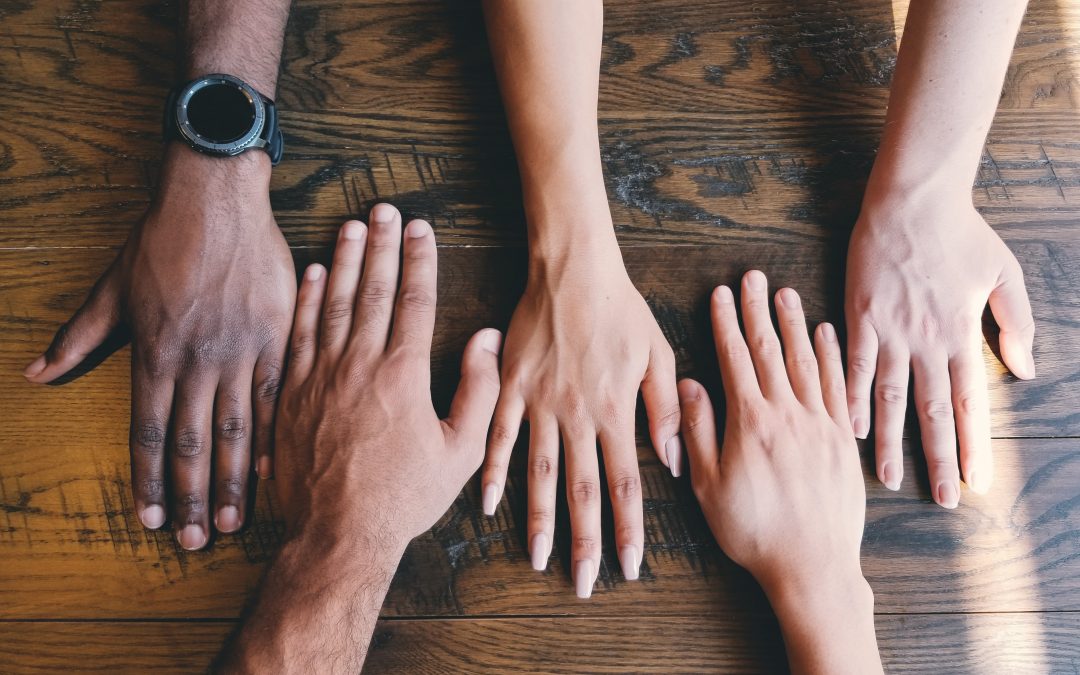
by Rachel Toalson | Books
1. Reading: I just finished Erin Entrada Kelly’s newest middle grade book, Those Kids from Fawn Creek. What I liked most about this one is that it humanizes the people who make mistakes, who maybe have a moment (or more than a moment) of meanness. That’s an important lesson for kids to learn and for all of us to remember. We’re all just doing the best we can, right? (Erin Entrada Kelly won the 2018 Newbery medal with Hello, Universe, and her middle grade book We Dream of Space was a Newbery Honor book in 2021. Both are worth checking out.)
2. Reading: I’m currently on a research frenzy, reading everything I can about the 1900 hurricane in Galveston, which was the deadliest natural disaster and the worst hurricane in U.S. history. (Why am I researching? For a story, of course!) The best book I’ve read about it is Erik Larson’s Isaac’s Storm: a Man, a Time, and the Deadliest Hurricane in History. Larson is one of my favorite nonfiction writers. He’s written many historical books. I haven’t read them all but can highly recommend In the Garden of Beasts: Love, Terror, and an American Family in Hitler’s Berlin; Dead Wake: the Last Crossing of the Lusitania; and Devil in the White City: Murder, Magic, and Madness at the Fair that Changed America. Larson also released his first novel, No One Goes Alone, last year. It’s been on my TBR list for a while now, called “a ghost story grounded in history.” Who wouldn’t want to read that?
3. Reading: As a mom trying to still be productive and creative while my kids are home for the summer, I found this piece particularly relevant. And cool. And not just for moms. Or writers. How many of us find our “second acts” later in life? Doing what we love and loving what we do? It’s never too late to become who we want to be and do what we dream of doing.
4. Reading: Ellen Hopkins, one of my favorite novel-in-verse authors, has a new middle grade novel in verse out: What About Will. Hopkins is best-known for her young adult fiction (The You I’ve Never Known is so far my favorite) but started publishing in the middle grade space a few years ago. I liked this one so much I put it on several of my kids’ summer reading lists. Another of Hopkins’s middle grade gems: Closer to Nowhere. I highly recommend both!
5. Watching: On the TV side, my husband and I are currently making our way through Community. This is an older show, and I know we’re late to the party, but we’re really enjoying using it as a “palate cleanser” after some heavier shows (including Netflix’s Stranger Things, which recently released its fourth (and, I believe, final) season. I need some laughter after the terror!). You can watch Community on Netflix.

by Rachel Toalson | Wing Chair Musings
Everybody loves a celebration, don’t they?
The problem is, I often forget to celebrate.
This is terrible, you might be thinking. How in the world can a person forget to celebrate?
As someone who keeps a very meticulous calendar, it might even seem unbelievable that I forget to celebrate. And of course I don’t forget to celebrate my kids’ birthdays or the last (or first) day of school or every little amazing thing that happens in someone else’s life. There is always something worth celebrating when it comes to someone else.
But celebrating myself? Not so much.
I was recently reminded of this rather careless attitude of mine while talking to a friend. She hasn’t been to our Zoombie writing group for a while. When I asked her why she’d been missing, she said, “Well, I finished writing my chapter book and sent it off to my agent, and I just figured I’d celebrate for a while.”
I thought, When’s the last time I celebrated finishing a book? I thought, I usually just move right on, like it’s no big deal. (It’s a big deal. Writing 70,000 words over and over and over again? Seeing a project through to the finish? Making anything that adds value to the world? Those are all big deals.) I thought, I’m not even sure I properly celebrated getting a book deal.
I thought, What does a celebration really look like?
I don’t think I’m alone in this.
Celebrating yourself isn’t quite as easy as celebrating other people.
We should make it so.
Celebrations are uplifting. They’re markers of our hard work. We don’t work hard for the celebration, of course, but it allows us a moment to really take stock of the strength and fortitude and perseverance it takes to finish something, to share it with the world (or colleagues or teachers or friends), to give something back.
We can celebrate our hard work. We can give ourselves permission to acknowledge that while we came close to the edge of giving up (really, really close), we didn’t give up. We can celebrate the chapter written today, the newly perfected song lyric after so long feeling stuck, the second step of our project done and dusted, even if there are ten more to go.
We can celebrate in big, throw-a-party ways or tiny take-a-nap-during-this-work-session ways. It doesn’t really matter how we celebrate.
Celebration, I’m coming to understand, is a state of mind.
What would it look like if we turned a celebratory eye to the seemingly small, insignificant things of our world? We finally mowed the lawn after four weekends of having it on the to-do list. Celebrate! Our kid found his missing left shoe. Celebrate! We made it through the whole day without saying, “I was, like.” Celebrate!
I know these are mostly silly examples of small celebratory accomplishments, but I also often wonder now how much joy we might see if we looked at everything with celebratory eyes—and how much we miss when we don’t.
Here are some of my favorite ways to celebrate:
1. Watch a show or read a book.
Of course I’m always reading books for my writing career (because reading widely is one of the surefire ways to make you a better writer), but I also sometimes like to celebrate by taking half an hour or an hour to watch a favorite show. I’m currently watching Downton Abbey, a historical saga produced by the BBC (it was just taken off Netflix, but you can watch it on Amazon Prime as well). Because I don’t often take the time to watch shows, this really feels like a celebration when I do it.
2. Give myself a day off.
I’ve come to understand (or I’m starting to, at least) that days off are like celebrations in and of themselves for a person like me. I don’t often give myself days off, except for the occasional Sabbaticals I take to step away from projects and let my brain refresh itself. So a day off, or a half-day off, feels like a sort of celebration, especially when I can do something special with my friends or family. Which leads me to the last (and best) way (in my opinion) to celebrate.
3. Making new memories with family and/or friends.
I love sharing a special meal or having a small dessert party or buying (vegan) ice cream to have sundaes with my kids. Going out to a restaurant. Hosting a potluck. Seeing a movie in the theater. Visiting a park for a nature bike ride. All these things feel special and can be considered celebratory, with the right attitude and under the right circumstances (such as a finished manuscript or powering through a particularly difficult creative project or a week spent building a new habit like daily meditation).

by Rachel Toalson | Books
1. If you’re looking for a fantastic middle grade fantasy series, look no further than Angie Sage’s TodHunter Moon series. It’s three books—PathFinder, SandRider, and StarChaser—and so full of personality and humor, and I cannot say enough about it. Angie Sage is also the author of the seven-book Septimus Heap series, which you might want to read first. I read it years ago and (shhh…this is a secret) thought it was even better than Harry Potter. Sage’s worldbuildling is fantastic, and her characters are intelligent, hilarious, quirky, and thoroughly entertaining.
2. I really enjoyed this piece in The Atlantic. It’s a long read, but if you’ve felt the divide that is our world today, it’s well worth a look. Jonathan Haidt, the author of the piece, shares a look at the ways social media has perpetuated the divide. It’s very interesting to consider.
3. My husband and I sped through episodes of Apple TV’s The After Party. It was so well done! It follows characters who have just gone to their high school reunion and met up at an afterparty—where someone is murdered. I don’t typically watch murder mysteries, but this one was hilariously quirky. What was so brilliant about it was that each character told their own story in their own way. As an author, this was delightful to me. We’re always told that everyone in our stories, whether side characters or main characters, are the “heroes of their own stories.” And Apple TV did a fantastic job of showing that on the screen. This might be the only show I ever watch a second (or third) time, just to pick up on the things I missed the first time.
4. Speaking of Apple TV, they recently released a new series called Roar, pitched as “darkly comedic feminist fables.” That sounded perfect for me (plus there are some superstar actresses in it). I started watching it this weekend, and it’s both disturbing and hilarious at times. The episodes make you laugh, cry, cringe, wonder, shout, and do all the things good shows make you do. Do yourself a favor and binge in honor of Mother’s Day!
5. I recently finished Darcie Little Badger’s book A Snake Falls to Earth. If you haven’t yet read this one, it should be on your to-be-read list. The book earned a Newbery Award Honor and was long listed for the National Book Award this year, and it’s full of rich folklore and feels like a old story told in a fresh way. Really well done. Darcie Little Badger is also the author of Elatsoe, which was also a great read!
(Photo by veeterzy on Unsplash)

by Rachel Toalson | Happenings
Every Friday at 11:30 a.m. CST my husband and I present a live podcast on Facebook, YouTube, and Twitter. It’s called In the Boat With Ben and Rachel. We talk about creativity and productivity and what it’s like to be a creative person in today’s world. Here are the places you can watch and chat live:
FB: https://facebook.com/bentoalson
Twitter: https://twitter.com/bentoalson
YouTube: https://youtube.com/bentoalson
We also have a web site where you can sign up for a newsletter; we’re getting ready to launch this podcast, which will happen with a live launch party. We’ll be releasing the podcast episodes in all the regular podcast places, so you can always go back and listen as much as you want.
If you have any questions about creativity and/or productivity, be sure to get in touch, and we’ll consider it for a podcast episode.
Other news
I’m finishing up the final edits on the last two Fairendale books, which will release this summer, the six-year anniversary of the series. I’m hoping to have more to share about them in next month’s newsletter, but I can tell you that Book 19 follows the story of the Snow Queen (a Hans Christian Andersen fairy tale), and Book 20 follows the story of the Sea Witch (a Grimm fairy tale). I have really enjoyed writing both of these and am so excited to share them with you soon!
2022 books released
Below you’ll find the links for the books I’ve released this year. I’ve got more coming but don’t ever want to forget about these. For a look at all my books (including middle grade novels, adult essay collections, and just about everything in between), visit www.racheltoalson.com/writing.
Links:
Parenthetical Life
Ebook: https://amzn.to/3gGqhRF
Paperback: https://amzn.to/3rLlUeE
Hardcover: https://amzn.to/3HKwmI1
Ordinary Life
Ebook: https://amzn.to/3KlbpFi
Paperback: https://amzn.to/3MmfpY1
Hardcover: https://amzn.to/3LQUvPs
Sincerely Yours: letters in poetry
Ebook: https://amzn.to/3jsWWLX
Paperback: https://amzn.to/3rdwWZp
Hardcover: https://amzn.to/3uua9KH
(Photo by Kimberly Farmer on Unsplash)

by Rachel Toalson | Wing Chair Musings
I used to think I needed to do everything alone.
Everything from my personal life to my professional life. Maybe it was an aversion to asking for help. I still don’t like asking for help.
But over the years, I’ve come to understand that we’re not meant to do everything alone. Not even most things. Even more than that, I’ve experienced the wonder and joy of collaboration.
About a year ago, I began a couple different collaboration projects with some author friends. One is an author who feels stifled by plotting. She flies by the seat of her pants. I joined her in flying by the seat of my pants—a change to my regular brainstormed, organized plots. We are still working on our story, and I am having such fun writing it. Our characters are as different as we are—quirky, confident, and utterly delightful.
The other author is a plotter, like me. I had a spark of an idea for a fantasy story with a hard-hitting emotional core. We spent two hours brainstorming by Zoom. And what we came up with is so much bigger than I might have come up with myself.
There is truth in the saying, “Two brains are better than one.” If that’s a saying. I think it is. Maybe I made it up, though. (Probably not. There’s nothing new under the sun, right?)
That’s not even the whole of collaboration.
Every morning I also meet with a group of writers by Zoom. We call ourselves the Zoombies. We spend the first fifteen minutes of our time together talking about our lives. We spend an hour and fifteen minutes muting ourselves and working on our individual writing projects. And then we meet at the end of that time to discuss how our day’s writing went.
Sometimes we really do talk about how our writing session went. Sometimes we bring each other questions: What do you think about this plot point? What would you do in this kind of situation? Is the way I’ve handled this problem believable?
It’s so helpful to have that real-time feedback, to think with more minds than one.
We have a wealth of expertise and experience at out fingertips. Our friends, our colleagues, all the members of our family, have different ways of seeing the world and unique ways of approaching life and problems and solutions to those problems. I know a lot about writing, environmentalism, and managing squeezed-tight time. My husband knows a lot about technology, philosophy, and how to take an effective break and rest. We collaborate on a daily basis so I don’t have to learn how to fix a broken computer and he doesn’t have to learn how to edit our son’s ELA picture book project.
I even collaborate with my children. (You haven’t experienced real honesty until you’ve asked a 7-year-old, “What do you think of this story?”)
We think bigger together. So I’ve stopped thinking it’s “cheating” to collaborate, to bounce ideas off the people in my life. Instead, I am increasing my own brain power by inviting them into the circle. And I am waiting in the wings, to do the same for them when the time comes.
In the meantime, I get to grow closer to the people I respect, admire, and genuinely enjoy and love. We grow closer in our relationships when we ask for help.
A win-win all around, if you ask me.
I hope you have a fantastic month of collaboration with the people in your life.
Here are some of my favorite ways to collaborate with others:
1. Partner with someone on a creative project
My first novel, The Colors of the Rain, was originally written as photo responses. What I mean by that is a friend of mine, Helen Montoya Henrichs, with whom I used to work at the San Antonio Express-News collaborated with me on a creative project wherein she would send me two photos a week, and I would write poems about those pictures. I had the idea to connect the poems into a story, and my novel in verse was born. Collaborating like this with a different creative form can not only spark our creativity but also help set up a method of accountability. I held my friend accountable for taking creative photos every week. She held me accountable for making consistent progress on my story.
2. Brainstorm solutions with someone or a group of someones
This can apply to a creative project you’re working on or even as granular as a problem you’re dealing with in your life. The people around us have so much expertise and sometimes know more than we do. It’s also helpful to get different perspectives, since we all see things differently. A wise friend of mine has run a business, has a Ph.D. in the psychology of giftedness, and has lived a different life than I have. I can’t tell you how many times I’ve asked her life advice for something. It’s invaluable having two heads to brainstorm the solution to a problem.
3. Start a podcast with someone else
A podcast is a great form for engaging conversation. And when you do one with someone else, you learn about that other person, and you also might learn some things about yourself. My husband and I have a podcast for creative people, and every week we learn something new about each other, even though we’ve been married almost nineteen years. It’s been fun to discover new things about each other and ourselves.






